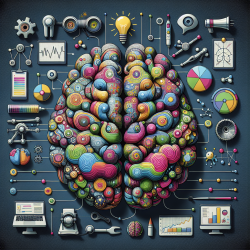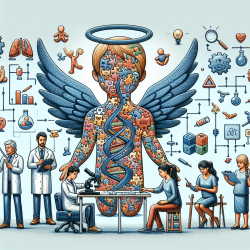Introduction: The Brain's Secret Language
In the ever-evolving field of psychiatry, understanding the complexities of mental disorders like schizophrenia is crucial. A recent study titled "Two neurostructural subtypes: results of machine learning on brain images from 4,291 individuals with schizophrenia" sheds light on the distinct neurostructural subtypes within schizophrenia. This research leverages advanced machine learning techniques to uncover the hidden patterns in brain imaging data, offering a new perspective on schizophrenia's diverse manifestations.
Discovering the Subtypes: A New Frontier
The study utilized a machine learning approach known as Subtype and Stage Inference (SuStaIn) to analyze MRI data from individuals with schizophrenia. The results identified two distinct neurostructural subtypes:
- Subtype 1: Characterized by an early cortical-predominant loss, with initial reductions in Broca’s area and adjacent fronto-insular cortex.
- Subtype 2: Exhibits an early subcortical-predominant loss, starting in the hippocampus and extending to other subcortical regions.
These subtypes suggest different trajectories of gray matter loss, which could lead to more personalized treatment approaches.
Implications for Practitioners
Understanding these subtypes can significantly impact clinical practice. Here are a few ways practitioners can implement these findings:
- Personalized Treatment: Tailor therapeutic interventions based on the identified subtype, focusing on the specific brain regions affected.
- Early Detection: Use MRI imaging to identify the subtype early in the disease progression, allowing for timely intervention.
- Research and Collaboration: Engage in further research to validate these findings across diverse populations and collaborate with other experts in the field.
Encouraging Further Research
The study highlights the importance of continuing research in this area. By exploring the neurostructural subtypes further, we can enhance our understanding of schizophrenia and improve treatment outcomes. Practitioners are encouraged to delve deeper into this research and contribute to the growing body of knowledge.
Conclusion: A Step Towards Personalized Psychiatry
This groundbreaking research marks a significant step towards a more personalized approach in psychiatry. By identifying distinct neurostructural subtypes, we can move beyond a one-size-fits-all model and offer targeted treatments that address the unique needs of each individual.
To read the original research paper, please follow this link: Two neurostructural subtypes: results of machine learning on brain images from 4,291 individuals with schizophrenia.










